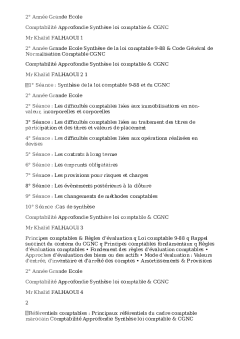Blcok 4 mco 7 unit 3 UNIT LEVERAGES Structure Objectives Introduction Concept and Types of Leverage Operating Leverage Meaning Computation of OL Behaviour of Operating Leverage Applications Financial Leverage Meaning Computation of Financial Leverage Beha
UNIT LEVERAGES Structure Objectives Introduction Concept and Types of Leverage Operating Leverage Meaning Computation of OL Behaviour of Operating Leverage Applications Financial Leverage Meaning Computation of Financial Leverage Behaviour Applications Composite Leverage EBIT-EPS Analysis Importance of Leverage Practical Problems Let us sum up Key words Answers to check your progress Terminal Questions Selected References C OBJECTIVES After studying this unit you should be able to ? understand the concepts of ?nancial leverage operating leverage and total leverage ? explain the computation process of leverages ? assess the behaviour and applications of leverages ? analysis the relationship between EBIT and EPS ? discuss the importance of leverages ? Illustrate various practical problems of leverage INTRODUCTION In the arena of ?nancing decisions the capital structure decision assumes greater signi ?cance As it deals with debt equity composition of the organization the resultant risk and return for shareholders is of utmost concern for ?nance managers If the borrowed funds are more than owners ? funds it results in increase in shareholders ? earnings At the same time it also increases the risk of the organization In a situation where the proportion of the equity funds is more than the proportion of the borrowed funds the return as well as risk of the shareholders will be very low This underlines the importance of having an optimal capital structure where risk and return to shareholders be matched The e ?ect of capital structure where risk and return to shareholders may judiciously help the ?nance managers to decide their short term and long term strategies The behaviour and application of leverage helps in examining the whole issue in right perspective C CONCEPT AND TYPES OF LEVERAGES The dictionary meaning of the term leverage refers to an increased means for accomplishing some purpose ? It helps us in lifting heavy objects by the magni ?cation of force when a lever is applied to a f unction James Horne has de ?ned leverage as the employment of an asset or funds for which the ?rm pays a ?xed cost or ?xed return Christy and Roder de ?nes leverage as the tendency for pro ?ts to change at a faster rate than sales A few essential characteristics of leverage are as follows a Leverage is applied to the employment of an asset or funds b Pro ?ts tend to change at a faster rate than sales c There is risk return relationship which is basically found in the same direction d If higher is the leverage higher will be the risk and higher will be the expected returns A brief review of various types of leverage is as follows Return on Investment Leverage is an index of operational e ?ciency It is calculated as follows EBIT --------------Total Assets CAsset Leverage is the part of ROI leverage It is like assets turnover It is calculated as follows Sales --------------Total Assets A ?rm with a relatively high tur nover is said to have a high degree of asset leverage Operating Leverage
Documents similaires










-
51
-
0
-
0
Licence et utilisation
Gratuit pour un usage personnel Attribution requise- Détails
- Publié le Oct 26, 2022
- Catégorie Business / Finance
- Langue French
- Taille du fichier 74.9kB


